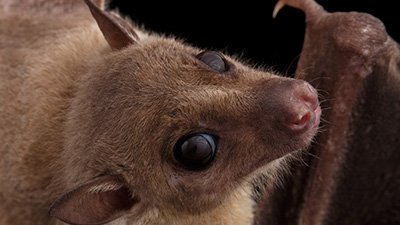
COVID-19, Coronavirus, and Creation Virology
Editor’s note: Despite a lockdown due to COVID-19, midterm and spring break, and pressures to get all courses online, Dr. Joe Francis of The Master’s University, a Creation College in Santa Clarita, California, arranged to provide us with some further insight into understanding viruses and the coronavirus in particular. We are grateful to him for this quick summary of general facts, as well as some of his preliminary research insights in this newly discovered virus.
What is virology? Virology is the scientific discipline within the biological sciences that involves the study of viruses. Creation biologists study viruses, and numerous papers have been published by creationists on this subject.1
What are viruses? All viruses are defined as having a nucleic acid, either DNA or RNA, which is surrounded by a protein “coat.” Some viruses have an additional outer lipid membrane called a lipid envelope. In many cases, the envelope appears to be “stolen” from the cells they invade.
Are viruses cells? Viruses are not cells. Cells have active internal biochemistry and can harvest energy and reproduce; viruses cannot obtain energy and cannot reproduce by themselves.
Viruses are often called the ultimate parasite because they invade cells and sneakily borrow the cells biochemistry to make copies of themselves.
What do viruses do? Viruses are often called the ultimate parasite because they invade cells and sneakily borrow the biochemistry of the cells to make copies of themselves. They then escape from the cell, often even killing the “host” cell. But virologists and creationists are finding that they do much more and actually do many beneficial things.
What are the coronavirus, COVID-19, and severe acute respiratory syndrome, and SARS-CoV-2? The coronavirus is a lipid-enveloped virus with an internal protein coat surrounding RNA. The coronaviruses have the largest RNA of all RNA-containing viruses. There are numerous coronaviruses in nature, and at least six types of them can cause significant human disease. The lipid envelope of the virus has proteins that stick out it. Some of those proteins are called spikes. The spikes make the virus looks like it has a crown—or corona. The scientific name of the current coronavirus is SARS-CoV-2. SARS stands for severe acute respiratory syndrome. It is also called the novel 2019 coronavirus. And the illness it causes is called COVID-19.

The coronavirus image above shows proteins on the surface of the virus. All these surface proteins can be possible "virulence" factors which cause illness. The "S" spike protein has been shown to be a virulence factor in related coronaviruses and to stimulate human immune factors that can stimulate inflammation to a high level. The grey part of the surface of the virus is the lipid envelope. Inside the coronavirus are non-structural proteins (nsp). nsp-1 in related coronaviruse stops the early warning immune system by inhibiting a very effective anti-viral protein called interferon. Image credit: CDC
How does SARS-CoV-2 cause illness? All viruses that cause disease have proteins called virulence factors, which are the cause of illness. The SARS-CoV-2 is a new (novel) coronavirus, so we don’t know much about how it works, but we know it has similarities to known coronaviruses. I was able to find two virulence factors that SARS-CoV-2 possesses in the published genome sequence that match virulence factors in known coronaviruses, which cause illness.2 One factor, nsp-1, suppresses the early warning immune system factor called interferon. The second factor, “S,” activates immune system messengers that alert the immune system to a high level. If both of these are active in COVID-19 illness, then this is the perfect storm for causing disease since the virus can bypass the early warning immune system and can activate inflammation to an extremely high level, which can then destroy lung tissue. These are only predictions and have not been proven.
Where does SARS-CoV-2 come from in nature? It appears that SARS-CoV-2 comes from an animal source. I was able to download the genome of the virus and compare it to other genomes in online databases using a program called BLAST.3 It has matches with bat coronaviruses, and other researchers are finding the same thing.4 According to my research, most viruses that cause illness in mammals and humans are zoonotic, which means they originate in animals.
Although viruses are not mentioned in the Bible, the microbial world in which viruses are active is mentioned.
What does the Bible say about viruses, and where do they come from in God’s creation? Although viruses are not mentioned in the Bible, the microbial world in which viruses are active is mentioned. For instance, microbes like yeast and bacteria are used in many fermented food products, and fermented drinks and bread are mentioned as well. Both yeast and bacteria have viruses, which may actually foster these fermentation processes. Recently, fermentation genes were discovered in a virus.5 And good viruses that help eliminate bad bacteria in fermentation products are also being explored6.
Leaven is mentioned in Bible illustrations demonstrating spiritual principles. And the growth of the kingdom of heaven is related to how leaven works, a positive example (Luke 13:20–21). This is probably a reference to yeast that we use in the making of bread. Again, in our world, we find many microbes being involved in beneficial activities, even viruses.
If viruses are not all bad, what were they designed to do in creation?
Viruses, even though small and simpler than most cells, possess tremendous designs.
Viruses, even though small and simpler than most cells, possess tremendous designs. I propose that some viruses were created for good uses in creation, and some other viruses were altered by Adam’s fall into sin and turned up in places they should not be. I call this the displacement theory in creation biology.7 In the human genome, for instance, we have more DNA sequences that align with viruses than we have sequences that code for our own proteins! Some of these virus sequences in the human body make proteins that mute our immune system, for example, near the growing embryo. Could some bad viruses then originate from animals and from us? If so, this supports the displacement creation theory, and, as we have stated above, many infectious viruses in humans have a zoonotic origin. For instance, we have heard about the swine and the bird flu. In these cases, human and bird influenza (flu) viruses mix in pigs, and new influenza viruses are created from a mixture of the viral parts. These types of flu are usually the most infectious and deadly.
Let’s explore another example: the most numerous biological creatures on earth are a group of viruses called bacteriophages. Bacteriophages are viruses that live in and on every known bacterium. There can be up to hundreds of viruses in each bacterium on earth. Cyanobacteria are predicted to be the most abundant bacteria on earth. We can see “blooms” of cyanobacteria in the oceans even from space because they are bright green in color. It is estimated that cyanobacteria, which can perform photosynthesis, capture as much carbon from the atmosphere as all the plants on earth. Every living thing on earth needs carbon, and most of it comes from photosynthesis. We are carbon-based life forms. Thus, cyanobacteria help support all life in the oceans and even us when we eat seafood.
Each cyanobacterium lives with cyanophages, which are viruses that exist inside cyanobacteria. The cyanophage viruses do two major things to help the carbon cycle on earth. They break open the cyanobacteria releasing carbon in the ocean for carbon sinks: storage forms of carbon which help reduce the carbon in the atmosphere, and for integration into living creatures. And cyanobacteria can die from sunburn. So, we have discovered that cyanophage viruses can inject genes into cyanobacteria restoring the genes for their sunburned proteins.8
We serve an amazing Creator who has established a life-supporting microbial-based biomatrix that supports life on earth.
We can truly say then that most viruses are supporting life on earth. We serve an amazing Creator who has established a life-supporting microbial-based biomatrix that supports life on earth.9 So, it should not be surprising that our Creator uses the smallest but most abundant creature on earth, the lowly bacteriophage virus, to support life.
I believe even the coronavirus was created for beneficial purposes on earth, and creation scientists can help solve the puzzle of disease-causing viruses by looking for their original good purpose. That will help us know more about how this virus operates in nature. May we pray that the Lord helps all researchers to find a cure for COVID-19, and may we reach out to our neighbors with the hope of Christ!
More Beneficial Activities Related to Viruses
- Protecting plants: Viruses have been found to protect plants like the mighty chestnut tree that was almost wiped out from North America by a fungus. The few trees which survived were found to have a virus that protected the trees.
- Protecting the human microbiome: There is strong evidence that bacteriophages in the human gut may protect our good bacteria from our immune system.10
- Genetic engineering to fight disease: One of the most amazing genetic engineering mechanisms, which can be used to fight cancer and stop illnesses like malaria, comes from bacteria that fight bacteriophages.11
- Gene therapy: Viruses like the common cold virus are so good at injecting cells with DNA that they have been used in medicine to inject genes into the human eye to cure blindness.12
- Phage therapy to help burn patients: Burn patients can suffer life-threatening bacterial infections. Phages, which kill the bacteria that infect burns can be used to stop those infections. This therapy has been used in Russia for decades.13
Footnotes
- See for instance the following selections:
Jerry Bergman, “Did God Make Pathogenic Viruses?” Journal of Creation 13, no.1 (1999):115–125, https://answersingenesis.org/who-is-god/god-is-good/did-god-make-pathogenic-viruses/;
Andrew Fabich, “Celebrate Your Inner Virus” Answers in Depth 12 (2017), https://answersingenesis.org/biology/microbiology/celebrate-your-inner-virus/;
Andrew Fabich, “Where Did Ebola Come From?” Answers in Depth 9 (2014), https://answersingenesis.org/biology/microbiology/where-did-ebola-come-from/;
Andrew Fabich, “The Flu: Everything You Need to Know,” Answers in Depth 12 (2017), https://answersingenesis.org/biology/disease/flu-everything-you-need-to-know/;
Andrew Fabich, “The Beneficial Functions of Endogenous Retroviruses,” Answers in Depth 11 (2016), https://answersingenesis.org/biology/microbiology/beneficial-functions-endogenous-retroviruses/;
Joe Francis, “The Organosubstrate of Life,” Answers in Depth 4 (2009), https://answersingenesis.org/biology/microbiology/the-organosubstrate-of-life/;
Luke Kim, “Bacterial Attenuation and its Link to Innate Oncolytic Potential,” Answers Research Journal 1 (2008), https://answersingenesis.org/natural-selection/antibiotic-resistance/bacterial-attenuation-and-its-link-to-innate-oncolytic-potential/;
Ryan Lucas Kitner, “Genetic Variance of Influenza Type A Avian Virus and its Evolutionary Implications,” Answers in Depth 1 (2006), https://answersingenesis.org/natural-selection/antibiotic-resistance/influenza-type-a-and-its-evolutionary-implications/;
Yingguang Liu, “Cyclic Selection in HIV-1 Tropism: Microevolution That is Going Nowhere” Answers Research Journal 8 (2018):199–202, https://answersingenesis.org/biology/disease/cyclic-selection-hiv-1-tropism/;
Yingguang Liu, “Mutations in the nef Gene make HIV-1 More Virulent” Answers Research Journal 8 (2018):323–326. https://answersingenesis.org/biology/disease/mutations-in-nef-gene-make-hiv-1-more-virulent/;
Yingguang Liu, “Is HIV-1 Losing Fitness Due to Genetic Entropy?” Answers Research Journal 8 (2018):339–351, https://answersingenesis.org/biology/disease/is-hiv-1-losing-fitness-due-to-genetic-entropy/;
Yingguang Liu and Charles Soper, “The Natural History of Retroviruses,” Answers Research Journal 2 (2009):97–106, https://answersingenesis.org/genetics/the-natural-history-of-retroviruses/;
Elizabeth Mitchell, “Endogenous Retroviruses: Key to Mammalian Brain Development?,” Answers in Depth 10 (2015), https://answersingenesis.org/biology/microbiology/endogenous-retroviruses-key-to-mammalian-brain-development/;
Jean O’Micks. “Creation perspective of nucleocytoplasmic large DNA viruses.” Journal of Creation 30, no. 3 (2016):110–117; Warren A. Shipton “Origins of pathogenic microbes: part2-viruses.” Journal of Creation 30, no. 2 (2016): 78–87. - https://swissmodel.expasy.org/repository/species/2697049.
- https://blast.ncbi.nlm.nih.gov/Blast.cgi.
- Global Health News Wire, ”The covid-19 coronavirus epidemic has a natural origin, scientists say,” accessed March 20, 2020, https://globalhealthnewswire.com/viruses-vaccines/2020/03/17/the-covid-19-coronavirus-epidemic-has-a-natural-origin-scientists-say.
- Vincent Racaniello, “Fermentation genes in a giant algal virus,” Virology Blog, April 12, 2018, http://www.virology.ws/2018/04/12/fermentation-genes-in-a-giant-algal-virus/.
- Benjamin Wolfe, “Can good viruses keep bad bacteria out of fermented foods?” MicrobialFoods.org, June 27, 2015, http://microbialfoods.org/can-good-viruses-help-make-safer-fermented-foods/.
- Joe Francis, “Good Designs Gone Bad” Answers 4, no.3 (2009), https://answersingenesis.org/evidence-for-creation/design-in-nature/good-designs-gone-bad/.
- Debbie Lindell et al., “Transfer of photosynthesis genes to and from Prochlorococcus viruses,” PNAS 101, no. 30 (2004):11013–11018; https://doi.org/10.1073/pnas.0401526101.
- Joe Francis, “The Matrix—Life's Support System” Answers 3, no. 3 (2008), https://answersingenesis.org/biology/microbiology/the-matrix/.
- Joe Francis, Matthew Ingle, and Todd Charles Wood. “Bacteriophages as beneficial regulators of the mammalian microbiome.” J.H Whitmore ed in Proceedings of the Eighth International Conference on Creationism 8 (2018):152–157, https://digitalcommons.cedarville.edu/icc_proceedings/vol8/iss1/20/.
- Ibid.
- U.S. Food & Drug Administration News Release, “FDA approves novel gene therapy to treat patients with a rare form of inherited vision loss,” December 18, 2017, https://www.fda.gov/news-events/press-announcements/fda-approves-novel-gene-therapy-treat-patients-rare-form-inherited-vision-loss.
- UC San Diego Health, “Phage 101,” accessed March 20, 2020, https://health.ucsd.edu/news/topics/phage-therapy/Pages/phage-101.aspx.
Recommended Resources

Answers in Genesis is an apologetics ministry, dedicated to helping Christians defend their faith and proclaim the good news of Jesus Christ.
- Customer Service 800.778.3390
- © 2024 Answers in Genesis




